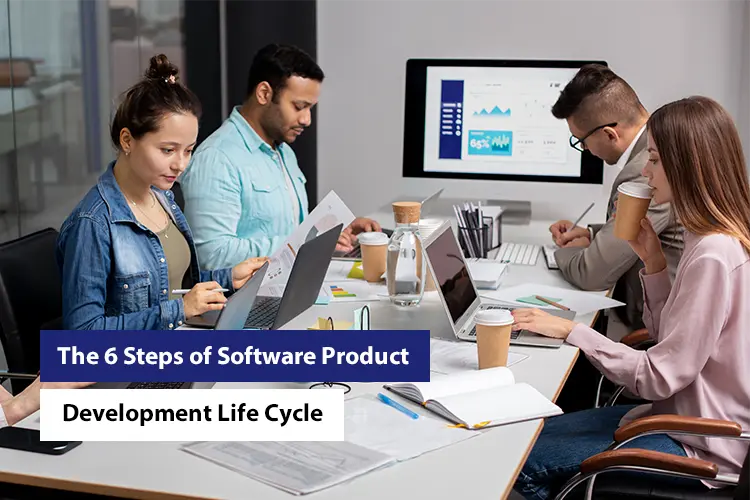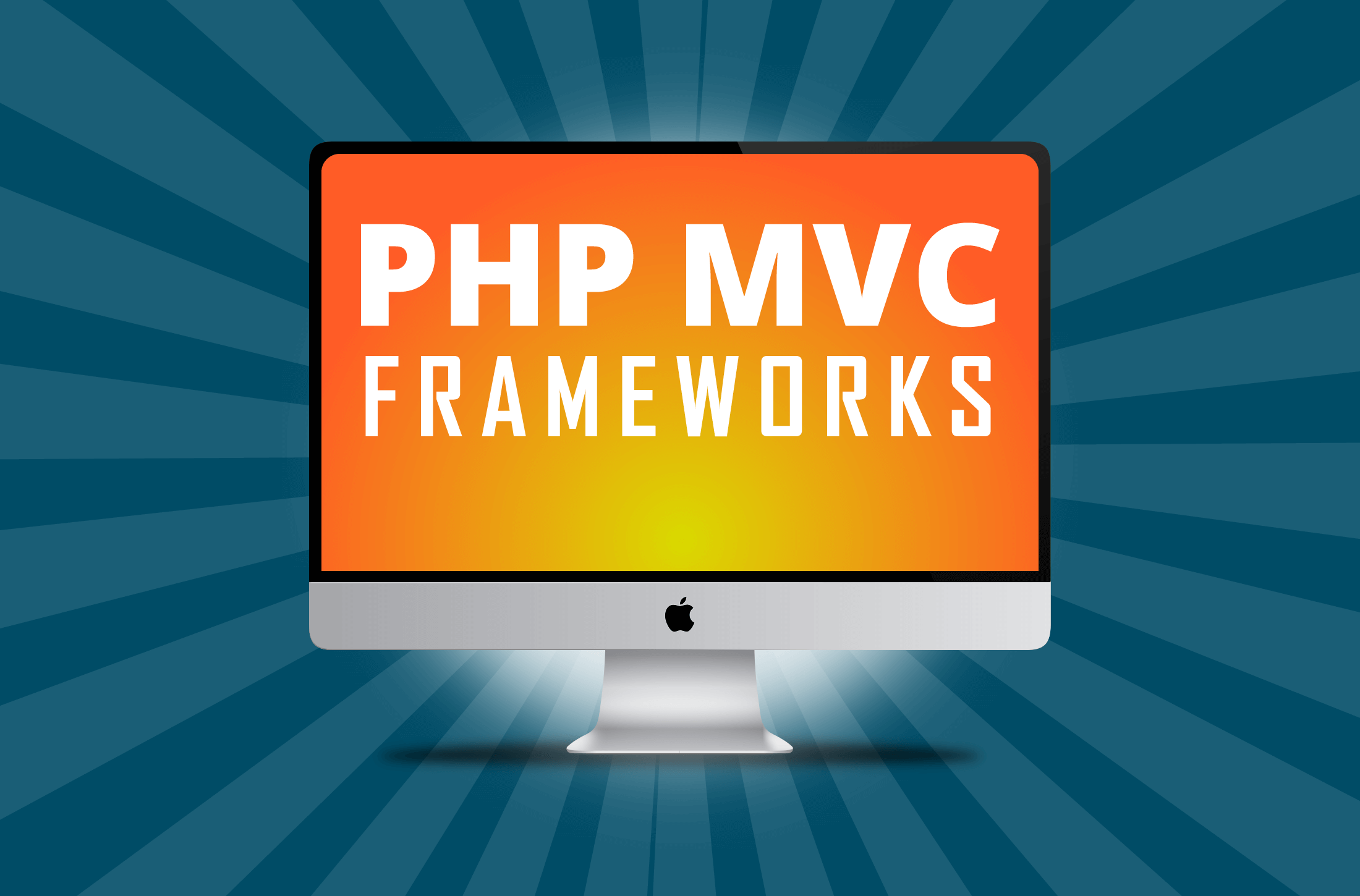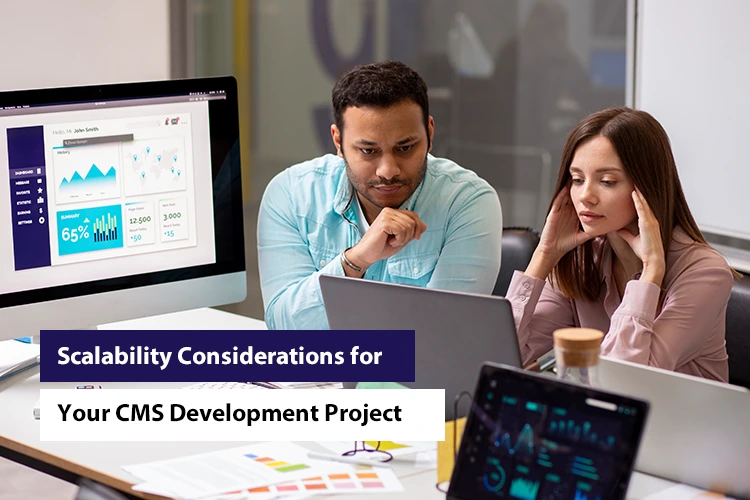The 6 Steps of Software Product Development Life Cycle

The Software Product Development Life Cycle (SDLC) represents a structured approach to crafting software solutions, guiding them from conception to deployment and beyond. Each phase of the SDLC is crucial, providing a framework for teams to collaborate, innovate, and deliver high-quality products that meet user needs and business objectives. Among these phases, maintenance, and support stand as the final frontier, representing an ongoing commitment to excellence long after the initial deployment.
In this blog, we delve into Step 6 of the SDLC: Maintenance and Support. This phase embodies the ethos of continuous improvement, emphasizing the importance of vigilance, adaptability, and responsiveness in sustaining software solutions over time. From addressing bugs and enhancing features to optimizing performance and planning for the future, maintenance, and support activities are essential for ensuring the longevity and success of software products in today’s dynamic and competitive landscape.
Join us as we explore the key components, best practices, and principles that underpin effective maintenance and support strategies. From bug fixing and performance optimization to user training and end-of-life planning, we’ll uncover the critical role that maintenance and support play in maximizing the value, reliability, and relevance of software products throughout their lifecycle.
Step 1: Planning and Requirement Analysis

The initial step in the Software Product Development Life Cycle (SDLC) is perhaps the most critical, laying the groundwork for the entire project. Planning and Requirement Analysis involves a comprehensive examination of the project’s scope, objectives, resources, and constraints. This phase is characterized by detailed discussions, analysis, and documentation to ensure a clear understanding of what needs to be achieved and how it will be accomplished. Let’s delve deeper into the key aspects of this foundational step:
Read Our Blog : A Comprehensive Guide to Embedded Software Development for Businesses
1.1 Project Definition : At the outset, it’s crucial to define the project’s purpose, goals, and vision. This involves articulating the problem the software solution aims to solve or the opportunity it seeks to capitalize on. Clear project definition sets the direction for all subsequent activities and ensures alignment among stakeholders.
1.2 Requirement Gathering : One of the most challenging yet essential tasks in this phase is gathering requirements. This involves eliciting and documenting functional requirements (what the software should do) as well as non-functional requirements (qualities such as performance, security, and usability). Techniques like interviews, surveys, workshops, and prototyping may be employed to extract requirements from stakeholders, end-users, and domain experts.
1.3 Feasibility Study : Before committing resources to the project, it’s imperative to conduct a feasibility study to assess its viability. This involves evaluating technical feasibility (whether the required technology exists or can be developed), economic feasibility (costs vs. benefits analysis), operational feasibility (impact on existing systems and processes), and legal and regulatory compliance.
1.4 Scope Definition : Scope creep—uncontrolled expansion of project scope—is a common pitfall that can lead to budget overruns and missed deadlines. Therefore, defining and managing project scope is crucial. This involves determining what’s included (in-scope) and what’s not (out-of-scope), setting boundaries, and establishing change control processes to handle scope changes effectively.
1.5 Risk Analysis : Every project entails risks, whether they are related to technology, resources, market dynamics, or other factors. Conducting a thorough risk analysis helps identify, assess, and mitigate potential risks early in the project lifecycle. Risk management strategies may involve risk avoidance, risk mitigation, risk transfer, or risk acceptance, depending on the nature and impact of the risks.
1.7 Project Plan : With a clear understanding of the project’s objectives, requirements, and risks, the next step is to develop a detailed project plan. This plan serves as a roadmap, outlining tasks, milestones, timelines, resource allocation, and dependencies. Project management methodologies such as Waterfall, Agile, or hybrid approaches may be employed, depending on the project’s nature and requirements.
Best Practices
- Foster Collaboration : Effective communication and collaboration among stakeholders are essential for gathering accurate requirements and ensuring alignment. Encourage open dialogue, active listening, and consensus-building to foster a shared understanding of project goals and expectations.
- Prioritize Requirements : Not all requirements are created equal. Prioritize requirements based on their business value, feasibility, and impact on project success. Techniques like MoSCoW prioritization (Must have, Should have, Could have, Won’t have) can help distinguish between essential and nice-to-have features.
- Embrace Change : In today’s dynamic business environment, change is inevitable. Be prepared to embrace change and adapt to evolving requirements throughout the project lifecycle. Establish flexible processes and change management mechanisms to accommodate changes while minimizing disruption.
- Engage Stakeholders : Stakeholder engagement is key to project success. Involve stakeholders—such as clients, end-users, sponsors, and subject matter experts—early and frequently throughout the planning and requirement analysis phase. Their input and feedback are invaluable for shaping the project’s direction and ensuring alignment with business objectives.
- Document Thoroughly : Documentation plays a crucial role in capturing, communicating, and validating requirements. Create clear, concise, and comprehensive documentation, including requirements specifications, use cases, user stories, and other artifacts. This documentation serves as a reference point for all project stakeholders and helps maintain clarity and accountability.
- Iterate and Refine : Requirements are not set in stone. As the project progresses and stakeholders gain new insights, requirements may evolve. Embrace an iterative approach to requirement gathering and analysis, allowing for ongoing refinement and validation. Regularly review and prioritize requirements to ensure they remain relevant and aligned with project objectives.
Step 2: Design

Once the planning and requirement analysis phase sets the project’s direction, the design phase brings the envisioned software solution to life through careful architectural planning, interface design, and system specifications. The design phase is where ideas take shape, transforming requirements into tangible blueprints for development. Let’s explore the key aspects of the design phase in greater detail:
2.1 System Architecture Design : System architecture design lays the foundation for the software solution, defining its overall structure, components, and interactions. Architects and technical leads collaborate to design a scalable, robust, and extensible architecture that aligns with project requirements and constraints. This involves selecting appropriate architectural patterns (e.g., layered architecture, microservices architecture) and defining key components, their responsibilities, and communication protocols.
2.2 Database Design : Effective database design is critical for managing and manipulating data efficiently. Database architects work to design the data model, schema, and relationships based on the application’s requirements. They consider factors such as data integrity, performance, scalability, and data access patterns. Techniques like entity-relationship modeling (ER modeling) and normalization are employed to create optimized database structures that meet the application’s needs.
2.3 User Interface Design : User interface (UI) design focuses on creating intuitive, visually appealing interfaces that enhance user experience and usability. UI designers collaborate with user experience (UX) designers to understand user workflows, preferences, and interactions. They develop wireframes, mockups, and prototypes to visualize the user interface design and gather feedback from stakeholders and end-users. UI design encompasses elements such as layout, typography, color schemes, navigation, and interactive elements.
2.4 Prototyping : Prototyping plays a crucial role in validating design concepts and gathering feedback early in the design phase. Designers create interactive prototypes or mockups that simulate key functionalities and user interactions. Prototypes allow stakeholders and end-users to visualize the proposed design, provide input, and identify potential improvements or usability issues. Rapid prototyping tools and techniques enable designers to iterate quickly and refine the design based on feedback.
2.5 Technology Selection : Selecting the right technologies, frameworks, and tools is essential for realizing the design vision and achieving project goals. Technology architects evaluate available options based on factors such as scalability, performance, interoperability, and developer expertise. They consider factors such as programming languages, development frameworks, databases, cloud services, and third-party integrations. The chosen technologies should align with the project’s requirements, budget, and long-term sustainability.
2.6 Security Design : Security is a paramount concern in software design, requiring proactive measures to protect data, systems, and users from threats and vulnerabilities. Security architects analyze potential risks and design security controls and mechanisms to mitigate them. This may include encryption, authentication, authorization, input validation, secure coding practices, and secure communication protocols. By incorporating security principles and best practices into the design, architects help build a secure foundation for the software solution.
Best Practices
- Design for Scalability : Anticipate future growth and scalability requirements when designing the system architecture and database schema. Use scalable architectural patterns, such as microservices or serverless architecture, and design databases for horizontal scalability. Ensure that the design can accommodate increased user loads, data volumes, and feature complexity without sacrificing performance or reliability.
- Prioritize Usability : Place a strong emphasis on usability and user experience throughout the design process. Involve UX/UI designers and conduct usability testing to ensure that the user interface is intuitive, accessible, and aligned with user needs and preferences. Strive for simplicity, consistency, and clarity in the design, minimizing cognitive load and maximizing user satisfaction.
- Embrace Design Patterns : Utilize design patterns and best practices to solve common design problems and promote maintainability, reusability, and extensibility. Design patterns such as MVC (Model-View-Controller), MVVM (Model-View-ViewModel), and SOLID principles provide guidelines for structuring code and components effectively. Leverage established design patterns and adapt them to suit the project’s specific requirements and constraints.
- Validate Design Concepts : Iterate design concepts and prototypes based on feedback from stakeholders and end-users. Conduct usability testing, user interviews, and heuristic evaluations to identify usability issues and refine the design accordingly. Use A/B testing and analytics to gather quantitative data on user behavior and preferences, informing design decisions and optimizations.
- Consider Cross-Platform Compatibility : Design the software solution with cross-platform compatibility in mind to reach a broader audience and facilitate seamless user experiences across devices and platforms. Adopt responsive design principles to ensure that the user interface adapts gracefully to different screen sizes and resolutions. Consider factors such as browser compatibility, operating system dependencies, and mobile responsiveness when designing the user interface and system components.
- Document Design Decisions : Document design decisions, rationale, and trade-offs to provide clarity and guidance for software developers, testers, and other stakeholders. Create design documents, architecture diagrams, and design guidelines that capture key design principles, patterns, and component interactions. Maintain up-to-date documentation throughout the design phase and beyond, serving as a valuable reference for future development, maintenance, and knowledge transfer.
Step 3: Development

The development phase of the Software Product Development Life Cycle (SDLC) is where the software solution begins to take shape through the implementation of the designs and specifications outlined in the previous phases. This phase involves writing code, building software components, and integrating them to create a functional product. Let’s delve deeper into the key aspects of the development phase:
3.1 Coding : Coding is the core activity of the development phase, where developers write the actual source code that comprises the software solution. They translate design specifications, requirements, and algorithms into executable code using programming languages such as Java, Python, C++, or JavaScript. Developers adhere to coding standards, style guides, and best practices to ensure readability, maintainability, and consistency across the codebase.
3.2 Unit Testing : Unit testing is an essential practice in offshore software development, where individual units or components of the software are tested in isolation to verify their correctness and functionality. Developers write unit tests for each function, method, or class, covering different scenarios and edge cases. Unit testing frameworks such as JUnit, NUnit, or PyTest are used to automate the execution of tests and provide feedback on code quality and test coverage.
3.3 Integration Testing : Integration testing focuses on testing the interaction and integration between various software components to ensure they work together as expected. Integration tests verify communication protocols, data flows, and interface compatibility between modules, services, and subsystems. Developers collaborate with testers to design and execute integration tests, identifying and resolving integration issues early in the development process.
3.4 Continuous Integration : Continuous Integration (CI) is a development practice where code changes are automatically built, tested, and integrated into the main code repository regularly. CI tools such as Jenkins, Travis CI, or GitLab CI automate the build and test process, providing immediate feedback to developers on the quality and stability of their code. CI promotes collaboration, reduces integration conflicts, and enables faster feedback loops, facilitating agile development practices.
3.5 Debugging and Troubleshooting : Debugging is the process of identifying, analyzing, and fixing defects, errors, or anomalies in the software code. Developers use debugging tools, profilers, and logging frameworks to diagnose and troubleshoot issues, such as runtime errors, exceptions, or unexpected behavior. They employ techniques like step-by-step execution, breakpoint debugging, and stack trace analysis to isolate and resolve bugs efficiently.
3.6 Documentation : Documentation is an integral part of the development phase, providing valuable information and context for the codebase. Developers document code comments, inline documentation, and README files to explain the purpose, functionality, and usage of software components. They also update design documents, API specifications, and technical manuals to ensure alignment between code implementation and design specifications.
Best Practices
- Follow Coding Standards : Adhere to coding standards, style guides, and naming conventions to promote consistency and readability across the codebase. Consistent coding practices facilitate code reviews, collaboration, and maintenance, reducing the likelihood of errors and misunderstandings.
- Write Testable Code : Write code that is modular, decoupled, and testable to facilitate unit testing and automation. Favor dependency injection, separation of concerns, and encapsulation principles to isolate units of code for testing. Design code with clear interfaces and contracts, making it easier to mock dependencies and write unit tests.
- Automate Testing : Embrace automated testing practices to validate code changes quickly and reliably. Implement unit tests, integration tests, and end-to-end tests as part of the development workflow. Use test automation frameworks and tools to automate test execution, reporting, and analysis, enabling continuous feedback and regression testing.
- Practice Refactoring : Refactoring is the process of restructuring code to improve its design, readability, and maintainability without changing its external behavior. Regularly review and refactor code to eliminate duplication, improve performance, and adhere to design principles. Refactoring helps keep the codebase clean, flexible, and adaptable to evolving requirements.
- Version Control : Use version control systems such as Git, SVN, or Mercurial to manage code changes, collaborate with team members, and track project history. Follow branching and merging best practices to organize development efforts, isolate feature changes, and facilitate code reviews and release management. Version control ensures code integrity, traceability, and collaboration across distributed teams.
- Foster Collaboration : Encourage collaboration and knowledge sharing among developers, testers, and other stakeholders throughout the development phase. Embrace pair programming, code reviews, and collaborative tools like code repositories, issue trackers, and communication platforms. Foster a culture of continuous improvement and learning, where team members can exchange ideas, share best practices, and support each other’s growth.
Step 4: Testing

In the Software Product Development Life Cycle (SDLC), the testing phase plays a pivotal role in ensuring the quality, reliability, and performance of the software product. Testing involves systematically evaluating the software against specified requirements, uncovering defects, and validating that it meets user expectations. This phase encompasses a range of testing activities, from functional testing to performance testing and beyond. Let’s explore the key aspects of the testing phase in greater detail:
4.1 Functional Testing : Functional testing verifies that the software functions correctly according to its specifications and requirements. Testers create test cases based on user stories, use cases, and acceptance criteria to validate the software’s behavior and functionality. Functional testing may include techniques such as black-box testing, white-box testing, and grey-box testing, depending on the level of visibility into the software’s internal workings.
4.2. Performance Testing : Performance testing evaluates the software’s responsiveness, scalability, and stability under various load conditions. Testers simulate user traffic, data volumes, and system interactions to assess performance metrics such as response time, throughput, and resource utilization. Performance testing techniques include load testing, stress testing, endurance testing, and scalability testing, aiming to identify bottlenecks, optimize resource usage, and ensure optimal performance under peak loads.
4.3 Security Testing : Security testing aims to identify vulnerabilities and weaknesses in the software’s security mechanisms and controls. Testers assess the software’s resistance to common security threats, such as injection attacks, cross-site scripting (XSS), and authentication bypass. Security testing techniques include penetration testing, vulnerability scanning, code review, and security audits, helping organizations mitigate security risks and protect sensitive data from unauthorized access or manipulation.
4.4 Compatibility Testing : Compatibility testing ensures that the software functions correctly across different devices, platforms, browsers, and environments. Testers validate compatibility with various operating systems, web browsers, mobile devices, and screen resolutions to ensure a consistent user experience. Compatibility testing helps identify issues such as layout discrepancies, rendering errors, and feature inconsistencies, enabling organizations to deliver a seamless experience to users across diverse platforms.
4.5 Usability Testing : Usability testing assesses the software’s ease of use, intuitiveness, and user satisfaction. Testers observe users as they interact with the software and collect feedback on navigation, workflows, and overall user experience. Usability testing may involve techniques such as user interviews, task-based testing, and heuristic evaluation, helping organizations identify usability issues and improve the software’s user interface and interaction design.
4.6 Regression Testing : Regression testing verifies that recent code changes or enhancements do not introduce new defects or regressions in existing functionality. Testers re-run previously executed test cases to ensure that critical features remain intact and unaffected by code modifications. Regression testing is essential for maintaining software quality and stability, particularly in agile development environments where frequent updates and iterations are common.
Best Practices
- Start Early : Begin testing activities as early as possible in the SDLC to identify defects and issues early in the development process. Incorporate testing into each iteration or sprint, enabling rapid feedback and early detection of issues before they escalate into costly defects.
- Automate Testing : Leverage test automation tools and frameworks to streamline testing efforts and increase test coverage. Automate repetitive and time-consuming test cases, such as regression tests, smoke tests, and sanity tests, to expedite the testing process and reduce manual effort.
- Use Realistic Test Data : Use realistic test data and scenarios that closely resemble real-world usage to ensure accurate and meaningful test results. Generate test data representative of different user profiles, usage patterns, and edge cases to validate the software’s functionality, performance, and scalability under diverse conditions.
- Collaborate Across Teams : Promote collaboration and communication between development, testing, and other cross-functional teams throughout the testing phase. Foster a culture of shared responsibility and accountability, where testers work closely with developers to triage and resolve issues collaboratively.
- Prioritize Test Cases : Prioritize test cases based on their criticality, business impact, and likelihood of failure. Focus on testing high-risk areas, complex features, and critical user workflows first, ensuring that essential functionality is thoroughly validated before less critical aspects.
- Continuously Improve : Regularly review and refine testing processes, tools, and strategies based on lessons learned and feedback from testing activities. Embrace a culture of continuous improvement, where teams strive to optimize testing practices, enhance test coverage, and deliver higher-quality software with each iteration.
Step 5: Deployment

The deployment phase of the Software Product Development Life Cycle (SDLC) marks the transition from development to production, where the software solution is prepared for release and made available to end-users. Deployment involves a series of coordinated activities to package, configure, and deploy the software to production environments, ensuring a smooth and seamless transition from development to operations. Let’s explore the key aspects of the deployment phase in greater detail:
5.1 Deployment Planning : Effective deployment planning is essential for ensuring a successful and efficient deployment process. Project stakeholders collaborate to develop a detailed deployment plan that outlines tasks, dependencies, timelines, and responsibilities. The deployment plan considers factors such as deployment environments, release schedules, rollback procedures, and contingency plans for mitigating risks and addressing unforeseen challenges.
5.2 Environment Setup : Before deploying the software to production, deployment environments must be provisioned, configured, and validated to ensure they meet the software’s requirements and specifications. System administrators and DevOps engineers set up production servers, databases, networking, and infrastructure components, following best practices for security, scalability, and performance optimization. Automated provisioning tools such as Ansible, Terraform, or Kubernetes may be used to streamline environment setup and configuration management.
5.3 Deployment Automation : Automation is key to ensuring consistency, reliability, and repeatability in the deployment process. DevOps practices such as continuous integration/continuous deployment (CI/CD) enable automated build, test, and deployment pipelines, automating repetitive tasks and reducing the risk of human error. Deployment automation tools such as Jenkins, GitLab CI/CD, or AWS CodePipeline orchestrate the deployment process, facilitating seamless integration and deployment of code changes to production environments.
5.4 Rollout Strategy : A well-defined rollout strategy is critical for minimizing downtime, disruptions, and risks during the deployment process. Organizations may adopt strategies such as blue-green deployments, canary releases, or phased rollouts to deploy updates incrementally and validate changes in controlled environments before full deployment. Rollout strategies enable organizations to monitor performance, gather feedback, and react to issues in real-time, ensuring a smooth and successful deployment with minimal impact on users.
5.5 Monitoring and Maintenance : Monitoring the deployed software is essential for ensuring its availability, performance, and reliability in production environments. DevOps teams implement monitoring and alerting systems to track key performance indicators (KPIs), detect anomalies, and respond to incidents proactively. Continuous monitoring enables organizations to identify performance bottlenecks, security breaches, and other issues early, enabling timely intervention and remediation. Additionally, ongoing maintenance activities such as patching, upgrades, and configuration management help keep the software secure, up-to-date, and aligned with evolving requirements.
5.6 User Training and Support : User training and support are crucial for ensuring a successful adoption and utilization of the deployed software by end-users. Organizations provide comprehensive training materials, documentation, and tutorials to help users onboard and familiarize themselves with the software’s features and functionality. Additionally, user support channels such as help desks, knowledge bases, and community forums are established to provide assistance, address user inquiries, and troubleshoot issues promptly. By empowering users with the knowledge and resources they need, organizations can maximize user satisfaction and drive adoption of the deployed software.
Best Practices
- Test Deployment in Staging Environment : Before deploying the software to production, thoroughly test it in a staging or pre-production environment that closely resembles the production environment. Conduct end-to-end testing, performance testing, and user acceptance testing to validate the software’s readiness for deployment. Staging environments provide a safe and controlled environment for identifying and addressing issues before they impact production users.
- Implement Continuous Deployment : Embrace continuous deployment practices to automate the deployment process and deliver updates to production rapidly and frequently. Implement CI/CD pipelines that automate build, test, and deployment tasks, enabling organizations to deploy code changes to production environments with minimal manual intervention. Continuous deployment streamlines the release process, reduces deployment lead times, and enables organizations to respond to changing requirements and market demands more effectively.
- Monitor Key Performance Indicators (KPIs) : Establish monitoring and alerting systems to track key performance indicators (KPIs) such as uptime, response time, error rate, and resource utilization in production environments. Monitor system metrics, application logs, and user feedback to proactively identify performance issues, security vulnerabilities, and other issues that may impact the user experience. By monitoring KPIs continuously, organizations can detect and address issues early, minimizing downtime and optimizing the performance of the deployed software.
- Plan for Rollback and Disaster Recovery : Prepare rollback procedures and disaster recovery plans to mitigate the impact of deployment failures, service disruptions, or unexpected incidents. Establish rollback mechanisms that allow organizations to revert to previous versions of the software quickly and safely in case of deployment issues or critical bugs. Additionally, implement disaster recovery strategies such as data backups, failover systems, and redundant infrastructure to ensure business continuity and minimize the impact of potential disasters or service interruptions.
- Communicate Effectively : Effective communication is essential throughout the deployment process to keep stakeholders informed, aligned, and engaged. Maintain transparent communication channels, update stakeholders regularly on deployment progress, and provide timely notifications about scheduled maintenance windows, downtime, or service disruptions. Establish clear escalation paths and communication protocols to facilitate collaboration, coordination, and resolution of issues that arise during deployment.
- Conduct Post-Deployment Reviews : After deployment, conduct post-deployment reviews and retrospectives to evaluate the success of the deployment process, identify lessons learned, and gather feedback for improvement. Analyze deployment metrics, user feedback, and incident reports to assess the impact of the deployment on performance, reliability, and user satisfaction. Use insights from post-deployment reviews to refine deployment processes, address pain points, and optimize future deployments.
Step 6: Maintenance and Support

The final phase of the Software Product Development Life Cycle (SDLC) is maintenance and support, which involves the ongoing management, optimization, and enhancement of the deployed software to ensure its continued functionality, performance, and relevance. Maintenance and support activities are essential for addressing bugs, implementing updates, and responding to user feedback to meet evolving requirements and sustain the software’s value over time. Let’s explore the key aspects of the maintenance and support phase in greater detail:
6.1 Bug Fixing : Bug fixing is a primary focus of maintenance and support, where developers address and resolve defects, errors, or anomalies identified in the deployed software. Users may encounter bugs during real-world usage, requiring timely investigation, diagnosis, and resolution by development teams. Bug fixes are prioritized based on severity, impact on user experience, and business priorities, with critical issues addressed promptly to minimize disruption and mitigate risks.
6.2 Performance Optimization: Performance optimization aims to improve the software’s responsiveness, efficiency, and scalability to deliver optimal user experience and accommodate growing demands. Development teams analyze performance metrics, identify performance bottlenecks, and implement optimizations to enhance system performance, reduce latency, and optimize resource utilization. Performance tuning may involve code refactoring, caching strategies, database optimization, and infrastructure enhancements to optimize the software’s performance under varying workloads.
6.3 Security Updates : Security updates are critical for maintaining the integrity, confidentiality, and availability of the deployed software in the face of evolving security threats and vulnerabilities. Development teams monitor security advisories, conduct security assessments, and apply patches and updates to address known vulnerabilities and mitigate security risks. Proactive security measures such as code reviews, vulnerability scanning, and penetration testing help identify and remediate security weaknesses before they can be exploited by attackers.
6.4 Feature Enhancements : Feature enhancements involve adding new functionality, improving existing features, and addressing user feedback to enhance the software’s capabilities and value proposition. Development teams collaborate with stakeholders to prioritize feature requests, gather requirements, and implement enhancements that align with business objectives and user needs. Agile development methodologies such as iterative development, user stories, and sprint planning enable organizations to deliver incremental feature updates and respond quickly to changing requirements.
6.5 Version Management : Version management is essential for managing software releases, maintaining version control, and ensuring consistency across deployment environments. Development teams use version control systems such as Git, SVN, or Mercurial to manage code changes, track revisions, and coordinate release cycles. Versioning schemes such as semantic versioning (SemVer) or date-based versioning help communicate changes, compatibility, and dependencies between software versions, facilitating effective release management and communication with stakeholders.
6.6 End-of-Life Planning : End-of-life planning involves preparing for the retirement and replacement of the software when it reaches the end of its lifecycle or is no longer viable or supported. Development teams collaborate with stakeholders to develop transition plans, migrate data, and communicate with users and customers about the discontinuation of the software. End-of-life planning ensures a smooth transition to alternative solutions, minimizes disruption to users, and maintains trust and goodwill with stakeholders.
Best Practices
- Establish Service Level Agreements (SLAs) : Define service level agreements (SLAs) and support processes to establish clear expectations for response times, resolution times, and service availability. SLAs help organizations prioritize and manage support requests effectively, ensure timely assistance for users, and maintain accountability for meeting service commitments.
- Adopt Agile Development Practices : Embrace agile development practices such as sprints, backlog grooming, and retrospective meetings to iteratively plan, prioritize, and deliver maintenance tasks and feature enhancements. Agile methodologies enable development teams to respond quickly to changing requirements, deliver value incrementally, and continuously improve the software over time.
- Invest in Automated Monitoring and Alerting : Implement automated monitoring and alerting systems to proactively detect and respond to performance issues, security incidents, and system failures in real-time. Monitoring tools such as Prometheus, Nagios, or Datadog provide visibility into system health, performance metrics, and potential issues, enabling organizations to take preemptive action and minimize downtime.
- Foster a Culture of Continuous Improvement : Encourage a culture of continuous improvement within the development team, where members are empowered to experiment, innovate, and share best practices. Provide opportunities for professional development, training, and knowledge sharing to foster collaboration, creativity, and learning, driving ongoing enhancements and optimizations in the maintenance and support phase.
- Solicit User Feedback : Engage with users and stakeholders to gather feedback, suggestions, and feature requests to inform maintenance and support activities. Establish feedback channels such as user forums, surveys, and customer support tickets to capture user insights, prioritize enhancements, and address pain points effectively. Actively listen to user feedback, validate requirements, and incorporate user-centric design principles to deliver software solutions that meet user needs and expectations.
- Plan for Scalability and Evolution : Anticipate future growth, scalability, and evolution of the software by designing for adaptability, extensibility, and modularity. Architect software solutions that can accommodate changing requirements, technologies, and business priorities over time. Plan for scalability by designing scalable architecture patterns, implementing flexible APIs, and leveraging cloud services to support dynamic scaling and evolving user demands.
Conclusion
The Software Product Development Life Cycle (SDLC) is a systematic approach to building high-quality software products from conception to deployment and beyond. By following the six essential steps outlined in this guide—Planning and Requirement Analysis, Design, Development, Testing, Deployment, and Maintenance and Support—organizations can streamline their development processes, mitigate risks, and deliver successful software products that meet user needs and business objectives. With careful planning, collaboration, and adherence to best practices, teams can navigate the complexities of software development and achieve sustainable success in today’s competitive landscape.
As you embark on your software development journey, consider partnering with Imenso Software to harness our expertise and experience in delivering innovative and reliable software solutions. With a commitment to excellence and a proven track record of success, Imenso Software empowers organizations to realize their vision and drive digital transformation. Contact us today to discover how we can help you bring your software ideas to life and achieve your business goals.
We’re honored to mention that our efforts have been recognized by renowned B2B review and research platforms such as GoodFirms, Clutch, MirrorView, and many more.
Want more information about our services?
Similar Posts

What Is CMS? And Why Your Website Must Have One
You can make a website in 10 minutes now. And it is not just a marketing campaign to entice business owners into trying a new tool. Building websites has never been easier than in 2021. There are a vast number of no-code website builders available on the internet for free. You can create a website […]...

In the World of PHP MVC Frameworks: Codeigniter Vs Yii Vs CakePHP Vs Laravel
“What’s 2018’s best PHP framework?”I can’t possibly recall the number of times I spot that question every year.In the late 1900s, the conversation used to flow around every party’s favourite programming language. C, Lisp, Pascal? You’d name a programmer’s most preferred coding tool, and they’d willingly offer one argument after another to convince you why […]...

Scalability Considerations for Your CMS Development Project
Is your Content Management System (CMS) ready for the future? As the digital landscape continues to evolve at a rapid pace, your website or application’s scalability becomes a make-or-break factor for success. Can your CMS seamlessly accommodate a surge in users, growing content libraries, and sudden traffic spikes? In the dynamic world of online content, […]...






